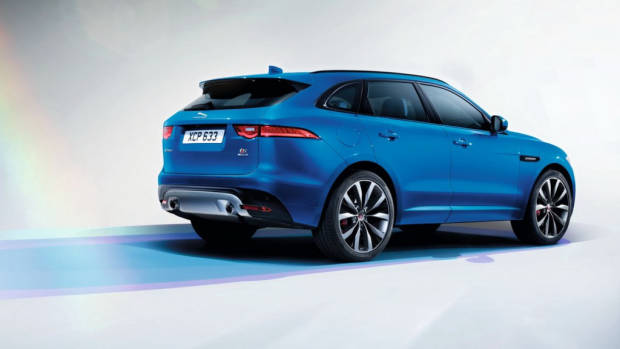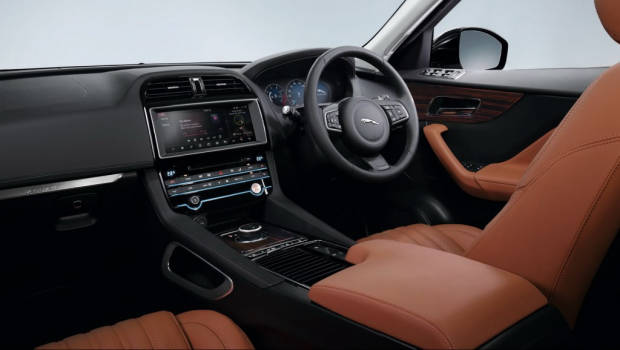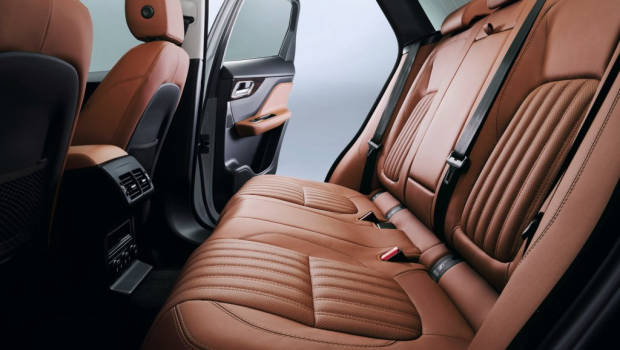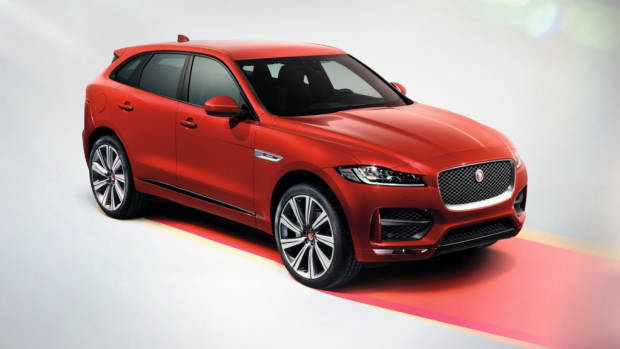-
Car Reviews
- Car News
-
Car Comparisons
Latest comparisons
- Chasing Deals
Launched in Germany this week, the 2016 Jaguar F-Pace is the British brand’s first-ever, designed to attract new customers to the brand by offering a sportier touch than many of its German competitors.
The F-Pace range capped by two halo V6 models—one offering an F-Type supercharged V6 petrol, and the other a 700Nm diesel. However, it’s the aggressively-priced four-cylinders that will drive the biggest volume of sales.
With Australian pricing likely to start around $75,000 for 2016 deliveries, the F-Pace is a huge development for the brand which once focussed solely on sedans and coupes. In much the same way that the Cayenne delivered tremendous new volume for Porsche sales, the F-Pace will do its part to fund development of future Jaguar sports cars.

Aesthetically, the F-Pace is the latest in a string of gorgeous designs penned by Jaguar Land Rover’s head of design, Ian Callum. To our eyes, the F-Pace is the most attractive SUV on the market, and a clear derivative of the thinking behind the design of the Jaguar F-Type sports car.
Five trim levels will be offered for the F-Type, along with four engines. Pricing for lower-end four-cylinders is expected to start around $75,000, making the F-Pace competitive with the Mercedes-Benz GLC-Class, which arrives later this year—plus updated versions of the BMW X3, Audi Q5, and the new Lexus RX.
The V6 variants will lock horns with Porsche’s Macan range, which currently dominates the small sports SUV segment.
The flagship of the range will be called the F-Pace S. It makes use of the F-Type V6 S’s 280kW turbo six, making 450Nm of torque. That’s good for a standing sprint to 100 in just 5.5 seconds, with power pushed to all four wheels through an eight-speed ZF automatic gearbox.
A detuned 250kW version sourced from the base F-Type will be offered in some markets.

There will be broad appeal to the three-litre diesel as well: it’s a 221kW three-litre unit that will make an impressive 700Nm of torque. Fast for a diesel, the oiler six will rush to 100 in 6.2 seconds.
Four-cylinders will be the volume sellers, though, and two will be available: the petrol is a two-litre unit with Ford EcoBoost origins, making 177kW and 340Nm.
Jaguar will deploy one of its new Ingenium four-cylinder diesels in what is expected to be the most popular F-Pace. The diesel four produces 132kW and 430Nm: Australia will certainly receive the all-wheel-drive version, and the rear-wheel-drive is a maybe—hindered by its manual-only status.
Inside, the F-Pace borrows heavily from the driver-focussed styling of the F-Type cabin, with elements of the new XE and XF sedans. The wrap-around dash focusses attention on a 10-inch touchscreen running Jaguar’s InControl Touch Pro system first seen on the 2016 Jaguar XF.
Jaguar are keen to demonstrate the F-Pace’s sports-utility credentials. A fascinating and on-theme accessory will be the optional Activity Key—it’s an elastic waterproof wristband that you wear on the beach, for example, leaving the proper key inside the car. The wristband will allow you to lock up and re-enter the vehicle by swiping your hand against the Jaguar badge on the boot.

The F-Pace isn’t designed to knock Land Rover’s off-roading credentials too heavily, but Jaguar’s SUV will have moderate ability off the tarmac. It will wade to 525mm comfortably, while the approach and departure angles of 25-degrees and 26-degrees respectively offer some flexibility. Three drive modes will be dedicated to off-road conditions.
It’s a sports SUV at heart, though. Jaguar emphasise the inclusion of a torque vectoring system, alongside a bespoke chain-driven transfer case. This allows torque to rapidly move between the front and rear axles. The all-wheel-drive system is properly rear-biased, though close to 100 percent of the torque can be deployed to either front or rear axle as conditions require.
The Jaguar F-Pace will arrive on Australian roads by mid-2016.

Latest news
About Chasing cars
Chasing Cars reviews are 100% independent.
Because we are powered by Budget Direct Insurance, we don’t receive advertising or sales revenue from car manufacturers.
We’re truly independent – giving you Australia’s best car reviews.